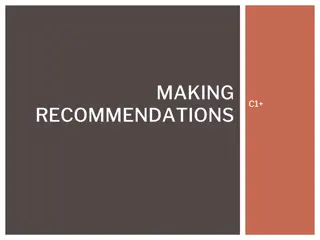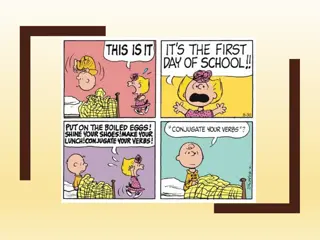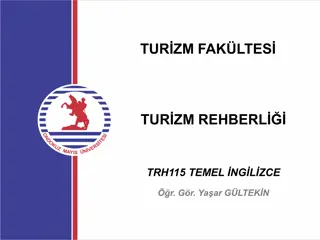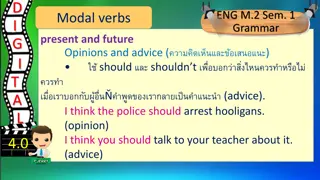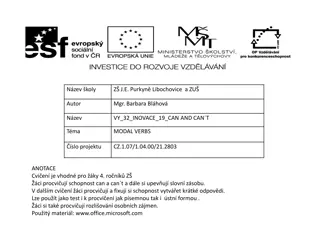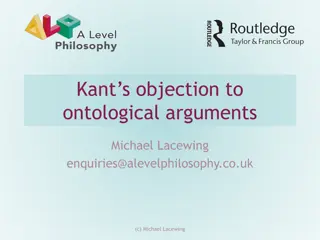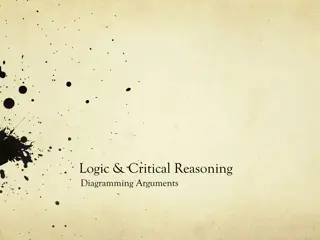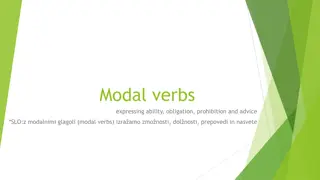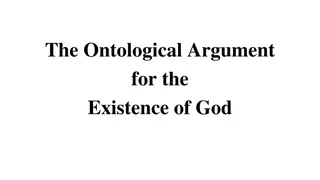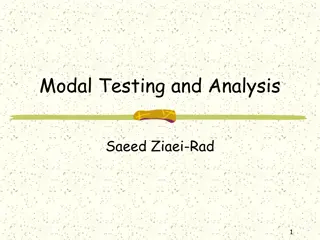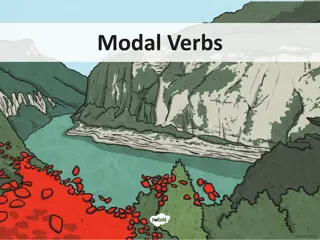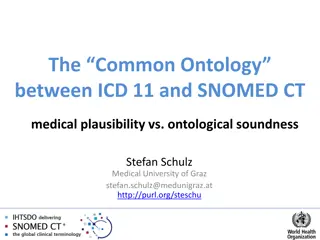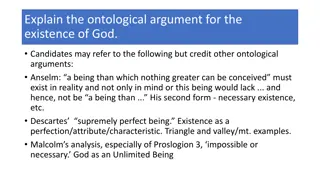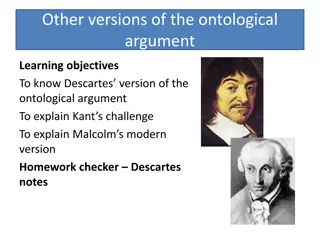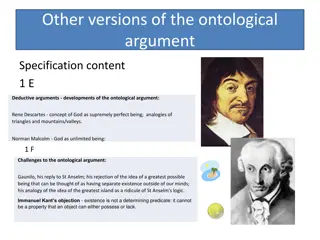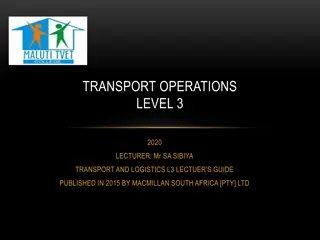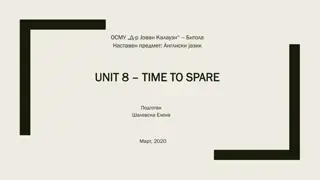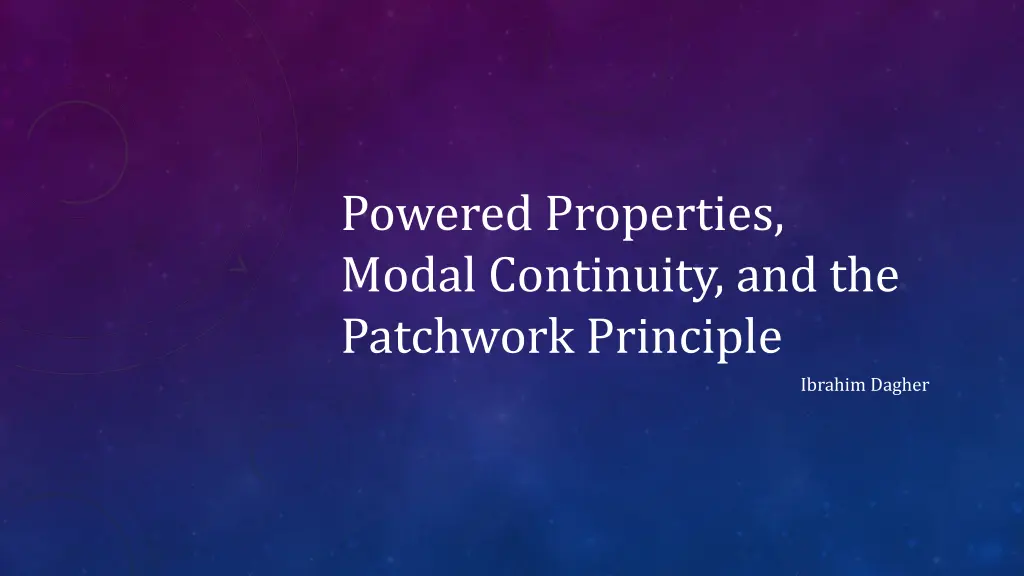
Understanding Modal Continuity and Powered Properties
Explore the principles of modal continuity and the concept of powered properties in relation to modal logic and philosophical arguments, shedding light on the interplay between these notions and their implications for modal reasoning.
Download Presentation

Please find below an Image/Link to download the presentation.
The content on the website is provided AS IS for your information and personal use only. It may not be sold, licensed, or shared on other websites without obtaining consent from the author. If you encounter any issues during the download, it is possible that the publisher has removed the file from their server.
You are allowed to download the files provided on this website for personal or commercial use, subject to the condition that they are used lawfully. All files are the property of their respective owners.
The content on the website is provided AS IS for your information and personal use only. It may not be sold, licensed, or shared on other websites without obtaining consent from the author.
E N D
Presentation Transcript
Powered Properties, Modal Continuity, and the Patchwork Principle Ibrahim Dagher
Overview Principles of modality principles that tell us what is possible play an important role in supporting crucial premises in various cosmological and ontological arguments for theism In particular, David Lewis Patchwork Principle, and Josh Rasmussen s Principle of Modal Continuity have featured prominently in theistic arguments Grim Reaper Kalam: If infinite causal chains are possible, the Grim Reaper Situation is possible Pruss (2018) and Koons (2014) both make use of patchwork/recombination principles to support this Ontological Argument: A maximally great being is possible Rasmussen (2018) uses his modal continuity principle to support this possibility claim What I m going to do is show that there is a large class of unforeseen counterexamples which I call powered properties to the Principle of Modal Continuity But more fascinatingly, I will show that the Patchwork Principle actually entails one of these powered properties I discuss. Thus, despite seeming like extremely similar approaches to modality, it turns out these two popular principles are in deep tension.
Modal Continuity The Principle of Modal Continuity, roughly, claims that differences in degree do not result in modal differences. If it is possible for a cup to weigh 4 pounds, it is also possible for it to weigh 5 pounds, and 6 pounds, etc. It would be odd if there were modal gaps, like if it were possible for a cup to be 5 pounds, but metaphysically impossible for it to be 6 pounds. More formally, the principle claims that any class of degreed properties is modally unified: if one of the properties in the class is exemplifiable, all the properties in the class are unified. So, take the class of properties being n pounds, i.e., {being 1 pound, being 2 pounds, } If any property in that class of degreed properties is possibly exemplified, all the properties are. Importantly, modal continuity is usually refined in certain ways, like excluding classes of logically impossible properties being n and m inches tall However, modal continuity is taken to still apply rather widely. I will now show how there are many everyday properties which violate modal continuity, by using the notion of a powered property.
Powered Properties: Powersets Let S be a set. The powerset of S, denoted P(S), is the set of all subsets of S. So, let S = {a, b, c}. It follows that P(S) = {{a}, {b}, {c}, {a, b}, {b, c}, {a, c}, {a, b, c}}. A nice feature of powersets is that the number of members they have is definable in terms of S. So, let n be the number of members in S, and N be the number of members in P(S). We have: 2n 1 = N What this means is that powersets have numerical gaps. For example, note that there is no way N can ever be 5. For there is no way for 2n 1 = 5. Only certain values are possible, like 1, 3, 7, 15, etc. If we discover that some set X can be expressed as the powerset of some other set, Y, then we know that it is impossible for X to have 5 members. It will also be impossible for X to have an even number of members, for powersets can only have an odd number of members.
Powered Properties: An Example from Mereology This feature of powersets has been used by Comesa a (2008) to bring out an interesting feature of mereological universalism. Take mereological universalism to be the view that, for any two objects O1 and O2, there is a third object, O3, which is the fusion of O1 and O2. Let s also assume that the world has atoms. It follows that, if one is a universalist, then there cannot be an even number of objects in the world. Take the set of atoms in the world, suppose it is: {a1, a2, a3}. Let the set of objects in the world be O. How many objects are in O? Well, each atom is an object, so a1, a2, a3 O. By universalism, a1 and a2 form an object, so {a1, a2} O. a2 and a3 also form an object, so {a2, a3} O. By universalism, every subset of atoms forms an object. In other words, on universalism, the set of objects in any world is just the powerset of the set of atoms. So, no matter how many atoms there are in any world, the number of total objects can only take on certain values: there cannot be 5 objects, there cannot be evenly-many objects, etc.! In other words, if one is a mereological universalist, then the property being an object is a powered property: its extension can be expressed as a powerset. So, we have a counterexample to modal continuity: the class of degreed properties being s.t. there are n-many objects has many modal gaps.
General Recipe for a Powered Property What made being an object work as a powered property (assuming universalism)? (1) Base Set: We had a base set, the set of atoms, from which the powered set, the set of objects, was generated (2) Property Distribution: Universalism entailed that being an object distributes across any two of its participants: for any two objects, there is a third object, the fusion of the first two (3) Possible Finitude: To act as a counterexample to modal continuity, we also needed that it was possible for there to be finitely many objects. Let s now build powered properties that don t require hefty assumptions like being an object required mereological universalism.
Examples of Powered Properties Example 1: being something I can t conceive of For any two distinct states of affairs s1 and s2 I can t conceive of, there is a third state of affairs, the spatial conjunction of s1 and s2, that I can t conceive of. If this is right, it follows there can t be an even number of inconceivable states of affairs for me. So, assuming that it is possible for only finitely many states of affairs to be inconceivable to me, then the class of properties being such that there are n-many states of affairs I can t conceive of has many modal gaps Example 2: being an action I have done For any two actions I have done, there is a third action, the action of doing one before the other, that I have done It follows that there can t be an even number of actions I have done. This will generate another counterexample using being an action I will do We can generate another counterexample using events rather than actions
Contrived Case: Affordability Suppose that your local store has a sale going on: any bundle of items will receive a 10% discount on the total price. I ll now show that the property being a good deal for me at the store is a powered property. First, let an item-price be a tuple <i , p>, where i is a non-empty set of items at the store (a bundle), and p is the final price of the bundle. Plausibly, we have the following: For any two distinct item-prices <i1, p1> and <i2, p2> that are a good deal for me, there is a third item- price, the bundle <i1 i2, 0.9(p1+p2)>, that is a good deal for me. So long as one accepts that a 10% discount on two individually good deals is itself a good deal, then the set of total good deals at the store is just the powerset of the good deals for individual items. So, no matter the size of the store, there cannot be an even number of good deals. Hopefully, the structure of the counterexamples here is clear: find objects O such that any two O s that have P, by some relation R, form another O which itself exemplifies P. As long as it is possible for finitely many O s to exemplify P, we have a counterexample to continuity.
Lewis and Koons Patchwork Principle as a Powered Property PP: For any two distinct possible spatiotemporal regions, there is a third possible spatiotemporal region, the spatial conjunction of the first two, that is also possible. At first blush, one might be tempted to immediately claim that the powered property is obvious here: PP entails that being a possible spatial patch is a powered property. But the problem with this approach is that it is very plausible that there are infinitely many possible patches, such that this won t be a counterexample to modal continuity To generate a counterexample, we will need to hone in on a specific kind of possible spatial patch such that it is plausible that there are only finitely many of this kind of possible spatial patches. PP will entail that this kind of spatial patch must be expressible as a powerset, and thus PP entails a violation of modal continuity.
Building the Counterexample To build this example, we start first with the notion of a group. A group of x s is a spatial region of x s such that each of the x s is spatially related to one another, and there are no x s outside of the region. (A maximal collection ) For instance, since all of the cookies in the actual world are spatially related, they form a group: the group of actual cookies. (There can only be one group in any world) Next, we define the notion of a w-cookie: a cookie is a w-cookie just in case it is an intrinsic duplicate of one (and only one) cookie in w. Basically, if a cookie is a w-cookie, it must be an intrinsic duplicate of some cookie in w. Because groups are spatial entities, PP entails the following: For any two distinct possible groups of w-cookies, there is a third possible group of w-cookies, the spatial conjunction of the first two. For instance, if there is a possible world, w*, with the group of w-cookies {cookieA, cookieB}, and another world, w**, with the group {cookieC}, then there is a possible world, w***, with the group {cookieA, cookieB, cookieC}.
The Counterexample To get our proof, we need 2 more (innocuous) assumptions: (1) That there is a possible world with finitely many cookies (2) For any cookie in a world w, there is a possible world where that is the only cookie We now have a derivation using PP to the falsity of modal continuity. Informally it is as follows: Let w be a world with the following group of cookies: {cookieA, cookieB, cookieC}. There is a possible world, w*, with the group of w-cookies: {cookieA} (by assumption). There is another possible world, w**, with the group of w-cookies: {cookieB} (by assumption). By PP, for any two distinct possible groups of w-cookies, there is a third possible group of w-cookies, the spatial conjunction of the first two. There is a possible world, w***, with the group of w-cookies: {cookieA, cookieB}. By repeated application of PP, we will have that for any subset of w-cookies, there is a possible world where that subset exists, as its own group. In other words, the set of possible groups of w-cookies is the powerset of the w- cookies. It follows that the class of properties of the form being such that there are n-many possible distinct groups of w- cookies has a modal gap. So, if the patchwork principle is true, modal continuity is false.
Recap & Objection To recap, we ve explored the notion of powered properties (properties expressible as powersets). We showed that these lead to a class of counterexamples to modal continuity. We also paved the way for showing a surprising inconsistency between PP and modal continuity. I d like to close by considering an objection: I noted earlier that modal continuity is formulated to exclude narrowly logically inconsistent propositions like being 3-sided and 4-sided. Might it be objected that all of the cases of powered properties I ve developed herein are not genuine counterexamples, as they are excluded by this constraint? After all, it is impossible for there to be, say, an even-number of good deals in the store for purely set-theoretic reasons. I don t think so. I find it hard to see how the counterexamples I have given here are narrowly logically impossible. They all require hefty metaphysical assumptions about how objects combine and whether it is possible for said objects to be finite. It is a feature of metaphysics if objects combine in ways to make powered properties. This point is especially evident in the case of the patchwork-inspired counterexample PP is far from a narrowly logical truth.

